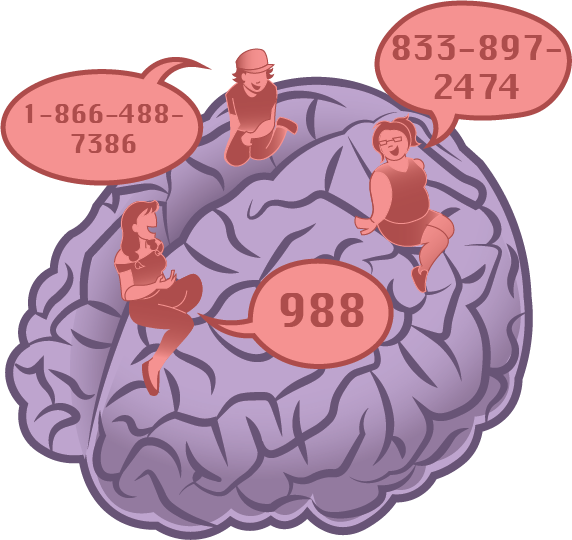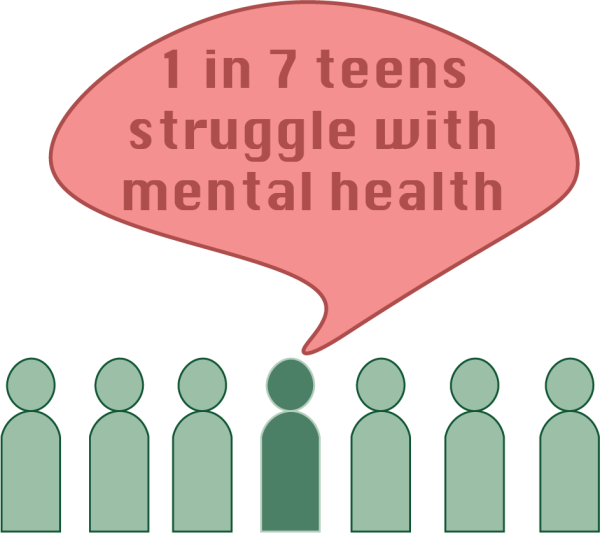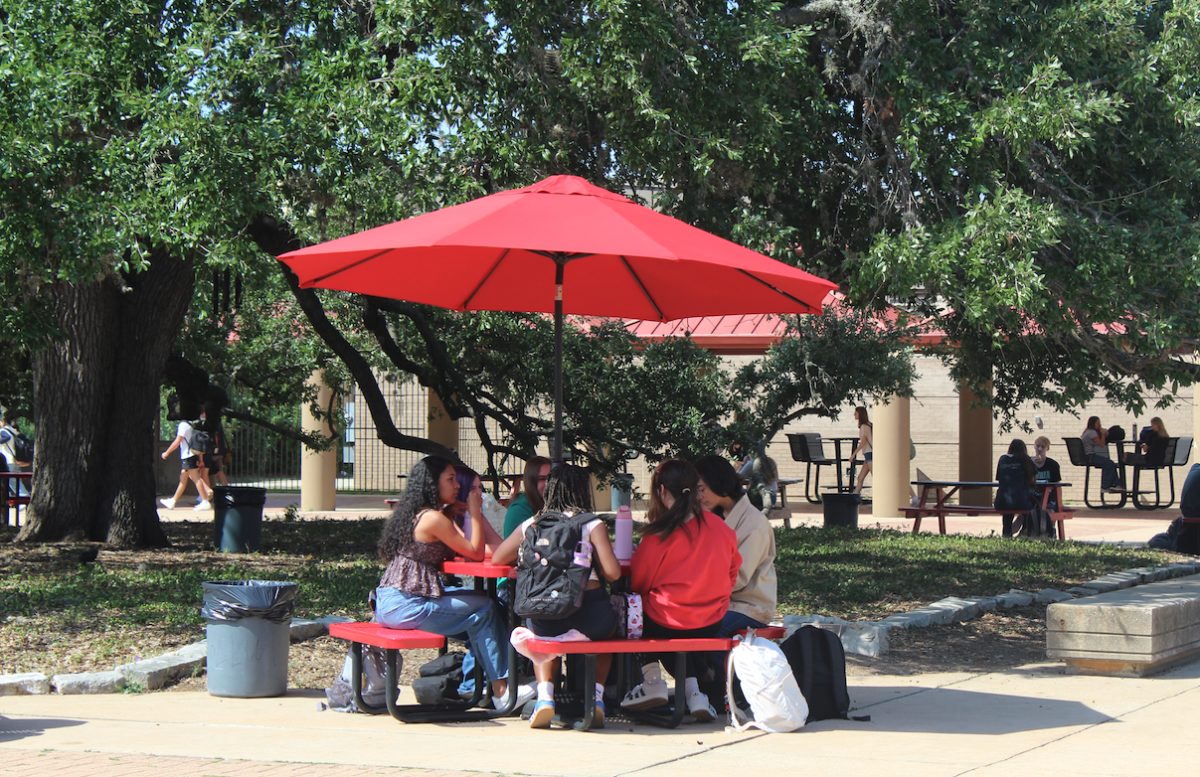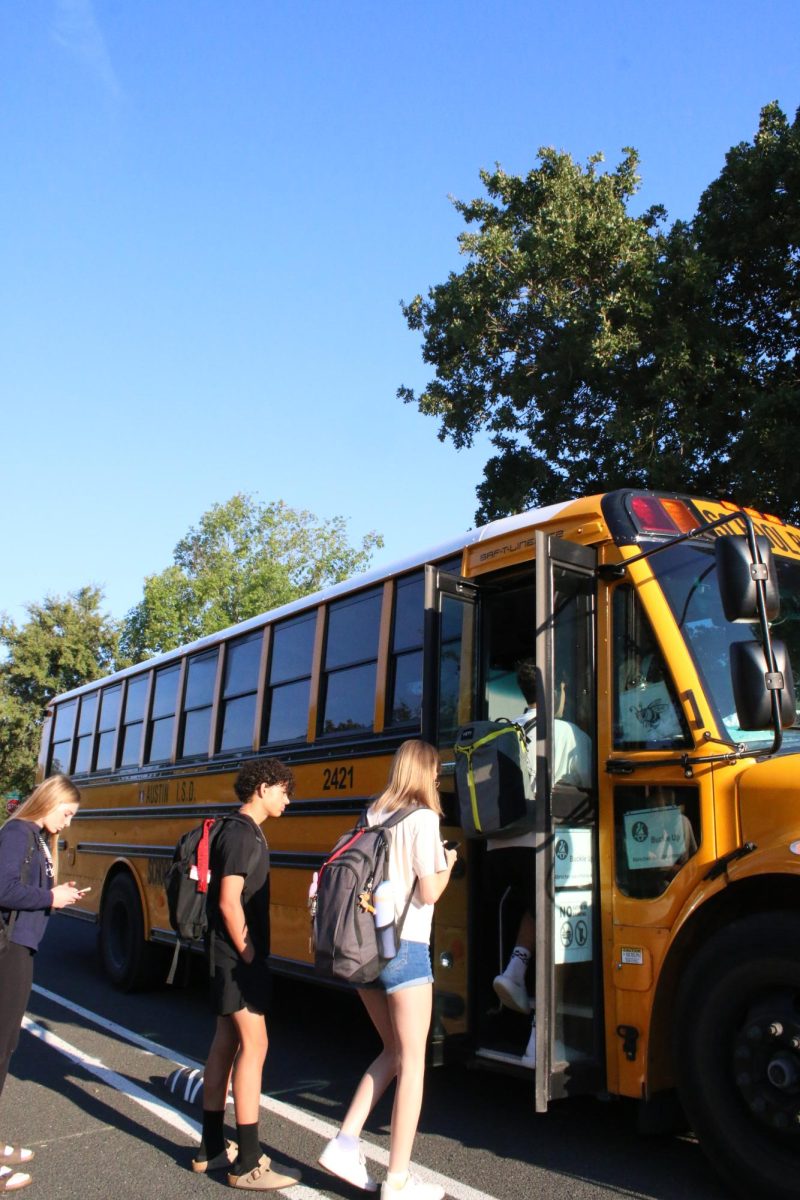
As students wait in line to walk the stage at graduation, they hear the name of a former classmate announced. The auditorium erupts into sympathetic cheers and applause as the former classmate’s family accepts their diploma on the student’s behalf. In recent years, this experience has become more common as teenagers struggling with mental illness resort to suicide as a solution.
Globally, one in seven adolescents will encounter a discouraging experience with mental illness at least once during their teenage years, according to the World Health Organization. Many of these instances go unnoticed, undiagnosed, and untreated. Bowie is no exception to these statistics and has recently implemented additional resources for students who may be struggling.
“We have a new mental health counselor, Kimberly Shaheen, who just joined us at Bowie this semester,” history teacher Alejandro Garcia said. “Her entire job is to be a resource for students who are struggling, or who go through something at school that they need to talk about immediately.”

Students can visit Shaheen in the counselor’s hallway at any point during the school day, or visit their alpha school counselor.
“I want Bowie students to feel supported,” Shaheen said. “My goal is that students talk to someone they trust. Even if that someone is not me, I’m here to help get them to whoever that trusting person may be.”
Additionally, students who may be struggling with a mental health crisis can access the national suicide lifeline by calling 988 or visiting 988lifeline.org. This helpline is available 24/7 and provides confidential counseling free of expense based on personal needs.
“I’ve used 988 to cope with personal issues before,” junior Atlas Garance said. “I’ve also used the lifeline to help friends who mentioned being a danger to themselves, and needed quick help.”
In recent years, Bowie has provided Gramercy, a mental health clinic, available on campus. This allowed students to attend regular counseling sessions without worrying about traveling back and forth from school.
“Gramercy was a great resource because not everyone has the means for transportation to and from a therapist’s office,” senior Raven Kemenesi said. “And, some therapists don’t accept insurance, so counseling can get expensive. Having it offered in a school makes the world of a difference.”
Students have expressed difficulty navigating mental health crises due to obstacles in finding the right therapist. However, Bowie can align students with a mental health specialist outside of school if they express interest.
“We have Care Solace here on campus, which is a program that assists students or their families who want to get set up with a therapist,” Shaheen said. “We send the parents a consent form, and they’re able to input their price range or insurance. Students can also specific their preferred gender, ethnicity, and age range of their therapist, and I will help them get set up with one.”
Studies recorded by the National Library of Medicine show that suicidal behaviors in high school students have increased by over 40% since 2019. Garcia attributes this unfortunate increase to the increased accessibility of social media.
“Social media is the catalyst for most mental health-related problems,” Garcia said. “Social media promotes unequal comparisons, which is unhealthy because people are comparing themselves to a glorified false sense of reality.”
According to the Mayo Clinic, stigmas surrounding mental health can deter people from seeking the help they need. Garcia believes that engaging with others about mental health can encourage students to ask for help when needed.
“When adults on campus open up about their struggles, as I have with my classes, it can be good for students because they realize, ‘Oh, if an adult is going through that, then I don’t feel so alone’,” Garcia said. “Moving in that direction, not only as a school, but as a society, will help us get on the right track, and alleviate some of those difficult moments where people feel alone.”







